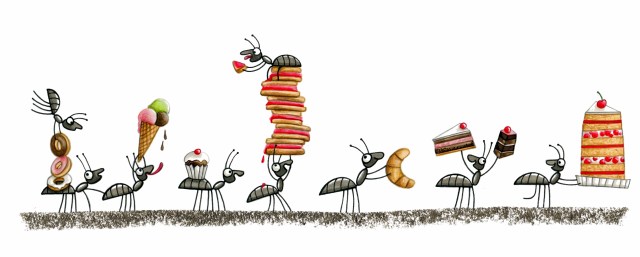My son, Tom, won’t eat vegetables. It’s the taste. It’s the texture. It’s just the very idea of eating a vegetable. He can choke down some broccoli under duress, but only after voices get raised, and even then, he has to slather it in ketchup, which wouldn’t be most people’s first choice, but we don’t want to discourage him. He’s 11 and he’s always been anti-vegetable. He’s a child of strong opinions. He eats fruit, and guzzles milk, and suffers the occasional ketchup-soaked broccoli, so he’s healthy and his pediatrician says he’s in no immediate danger of problematic vitamin deficiency. But lack of deficiency isn’t really the standard we’re going for. We’re going for well-balanced. Not Epicurean, necessarily, but let’s take it in on faith that a well-balanced diet will keep him healthy and serve him well in life. And the world is a better place after you’ve tasted butter sautéed morels. It just is.
Like most parents, we end up picking our battles, and the ones he wins end with a booty of burgers and fries. This happens too often. He wants to be a professional baseball player when he grows up, and we told him that wasn’t happening if he doesn’t eat his vegetables. He doesn’t care. Maybe he won’t be a baseball player after all, he says. Maybe he’ll be a professional hot dog eater. He saw a special on ESPN about Takeru Kobayashi, the hot dog-eating world champion, who seemed to be able to make a living at it. Tom doesn’t even like hot dogs that much, but he sees an opportunity to undermine our point, so he’s all in on it.
We researched all the advice on how to get picky-eaters to be less picky. The conventional wisdom is this: start early. Experiment when they’re too young to know the difference. Tom is the second of two, and this worked well for his sister Katie, who is the adventurous eater in the family. The girl loves a good mushroom. Maybe it’s the lot of the second child, but we seem to have dropped the ball the second time around. Maybe we were spread too thin or just exhausted. Or maybe it’s a DNA thing. The question is, what do we do about it now that he’s eleven and still fake-gags at the sight of anything green on his plate? Your mileage may vary, but in our experience, there have been several stages to this little drama.
- First was Persuasion: attempting to convince him of the nutritional benefits of eating veggies. As noted, this stage was unproductive.
- Next came Negotiation & Compromise. Conventional wisdom says not to negotiate with your child. Conventional wisdom is right. It doesn’t work and only cedes leverage where it isn’t warranted. Also, it turns out Tom is an excellent negotiator. This will serve him well later in life, but for now, it’s problematic.
- Moving on to the Introduction of Consequences. This stage is a bummer for everyone. Especially when negotiations have already failed and both sides have decided to dig in for the long haul. But the loss of screen time and no dessert are nothing compared to walking away from a career in Major League Baseball, so this goes nowhere.
- Exhaustion. By 11, you should really be eating vegetables. But here we are, exhausted and on the brink of defeat. No vegetables are consumed for some time in this stage.
- Emerging from Exhaustion, we had a breakthrough. It involved a last-chance, good-faith effort to explain why a well-balanced diet was important, followed by a genuine ask for Tom’s help in solving the problem. How can we do this together, buddy? Work with us. He thought about it. He thought about it some more. Ok, he said, if you can blend vegetables into smoothies so that I can’t taste them, I’ll give it a shot. (We’d tried this before, by sneaking in the veggies, but he developed some sort of sixth sense that alerted him to boycott them.) Now, for the first time, he was no longer objecting to vegetables purely on principle. He had met us, not quite halfway, but it was progress.
He felt invested in the solution, without being shamed or lectured or threatened with consequences, which was one important key to this particular puzzle. We’re partners now. So he’ll be getting a broader array of vitamins and nutrients in smoothie-form every day, though not the worldview expanding benefits that come from experimenting with different tastes and textures, and recipes from different cultures. But it’s a start.
The second breakthrough came in the form of a family project in which we wrote a book about picky-eaters. It echoes a lot of Katie and Tom’s conversations around the dinner table. We had published a few other books, and our little creative team had been casting about for new ideas. I figured, as a co-author of a book on the topic of picky-eaters and the upside of trying new food, surely Tom would feel an obligation to make good on its premise. And he has, a little. Baby steps. We’re getting there.
So if all else fails, try investing your picky-eater in the solution. Form a partnership. And then have your fully-invested picky eater write a book about the benefits of trying new things. That’s part’s a little trickier. Like I said, your mileage may vary. But it’s working for us. I bought some chocolate covered ants for dessert the other day to test how far we’d come. Tom wouldn’t eat them. But then, neither would Katie, who’s supposed to be the adventurous one. Apparently, that was just too much. I can’t say I blame them, though. They were kind of gross.
